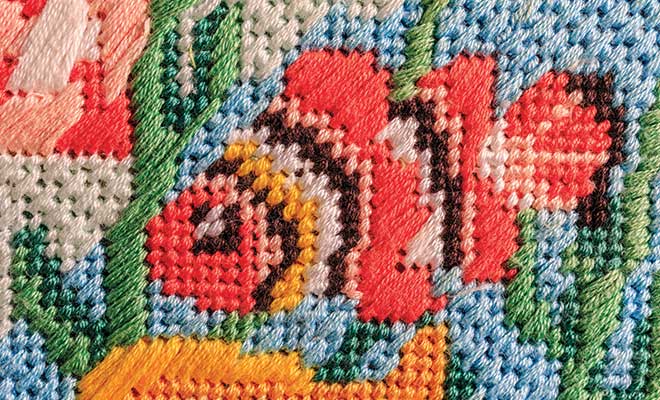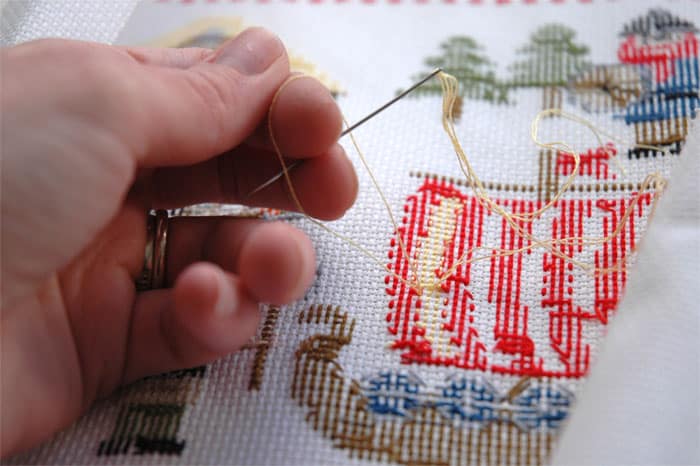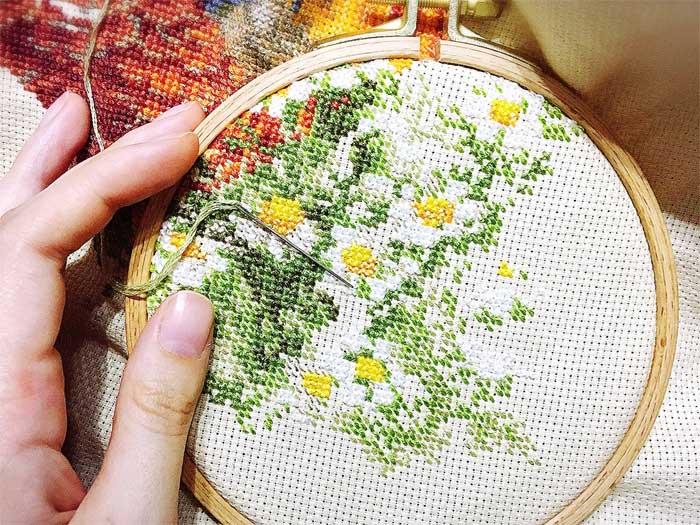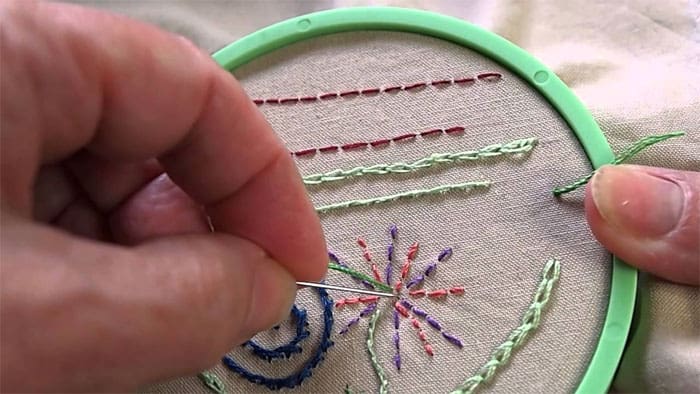Of all the ways for a person to do embroidery on canvases or fabric, needlepoint and cross-stitching are two of the popular methods. These methods have been around for centuries and will always be a part of different cultures and industries.
In case you are interested in knowing everything about these two methods and want to know which type is better between needlepoint vs. cross-stitch, then you have come to the right place.
We will tell you about the features of each type and differentiate them for you to know which one to pick for yourself.
Needlepoint

The needlepoint method of embroidery originated from the ancient Egyptian era. This technique is far older than the cross-stitch technique. It may be more popular, but it is also trickier.
Needlepoint stitching has numerous stitching types. Each type of stitch depends on the type of canvas you are using and the area you need to cover.
The needlepoint technique is mostly used for fabric that is meant to be durable, so the needlepoint stitching is also done in a way that it is long-lasting.
Below some features of needlepoint are given
- Uses of Needlepoint Stitches
Some areas the needlepoint stitching technique is used are on purses, bags, jewelry, belts, keychains, spectacles, decorative wall hangings, portraits, tapestry, etc. These are some of the areas aside from clothing purposes where needlepoint is used.
In general, people would use needlepoint for fabric-related household items like the fabric on for sofa covers, pillow covers, table cloth, or other furniture covers. But in the modern-day, needlepoint is used for artistic reasons.
- Types of Needlepoint Stitches
Aside from the various areas needlepoint is used, you also need to know about the various kinds of needlepoint stitches.
Some of them are the petit point, gros point, quick point, etc. This differentiation is done depending on the number of holes per inch on the canvas where the stitching will take place.
The petit point needlepoint stitching is a relatively small scale stitching where the canvas will have about 16 to 20 holes every inch. And the gros point is when the canvas has 8 to 16 holes per inch. The quick point is when the canvas has 7 or fewer holes per inch.
Moreover, the design on the canvas varies a lot for each type of needlepoint. It will also take more time and effort since precision is needed, but you can add more detail to it wherever you want to.
Cross-Stitch

Unlike the needlepoint stitching, cross-stitching requires only one stitching technique. It is not as popular as needlepoint, nor is it a century-old technique; it is relatively modern and simple. Almost anyone can handle doing cross-stitching.
Cross stitches are basically embroidering a bunch of small X-shaped stitches to a canvas or a fabric. You carry on making an entire collection of X-shaped stitches to form a certain shape or design.
No matter what design you make, whether it is a flower, a leaf, or a fish, the tiny little X shaped stitches will be visible. You can make any type of picture following this method.
- Uses of Cross Stitches
Certain types of fabrics and sizes also need to be taken into consideration when doing cross-stitching. For example, linen fabric is very compatible with cross stitches.
It is not important for the fabric to be coarse or durable. Cross stitches can be made on something as soft as people’s clothes as well.
- Types of Cross Stitches
There aren’t very many kinds of cross stitches, but the ones that are vastly used are the counted cross-stitch and the stamped cross-stitch. The counted cross-stitching requires the stitcher to count the threads on the fabric from all directions.
This helps them know the size of the cross stitches they can make so that it appears right. The stamped cross-stitching is basically stitching cross stitches over an already printed design on a cloth.
Needlepoint vs. Cross-Stitch

The general differences anyone can make out between needlepoint stitching versus cross-stitching is that needlepoint is tougher and takes more time and expertise while cross-stitching is simpler and quicker to do.
On the other hand, needlepoint seems to be more popular and has been alive for centuries, while cross-stitching is relatively new.
Since needlepoint has many kinds of stitching, it can handle different types of designs. Cross-stitching types are very basic, so it doesn’t make it that unique.
However, cross-stitching does have the advantage of being applicable to all kinds of materials or clothes since it is simple to do. But needlepoint can only be done on coarse materials.
Cross-stitch or Needlepoint: What is Easier?
Cross-stitch and needlepoint are two types of embroidery that are often thought of as being easier than each other. Cross-stitch is typically done with a single thread and uses smaller stitches, while needlepoint is done with several threads and larger stitches.
However, there are many different types of cross-stitch and needlepoint, so it really depends on the skill level of the embroiderer.
Final Words
Both the needlepoint and cross-stitch techniques can give you beautiful results in embroidery. Each has its own limitations and advantages depending on the type of need, fabric, design, thread, etc.
You will have to choose between needlepoint vs. cross-stitch and figure out which one suits you the most for the project or task you are working on.

